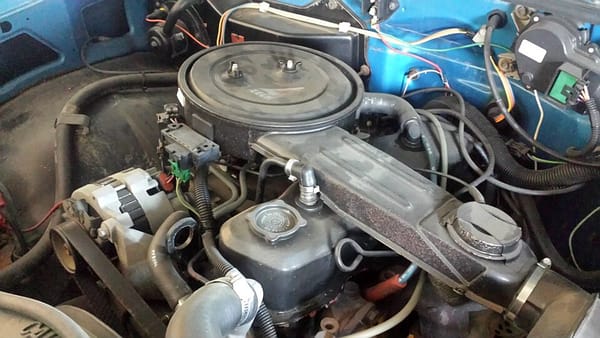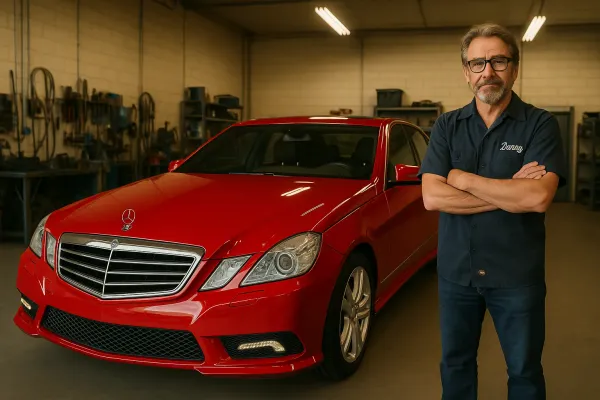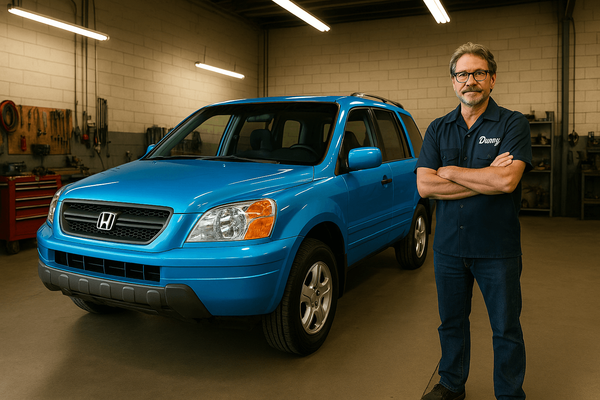The Muscle Car Myth: How America Fell in Love with Terrible Engines
Author Bio: Danny is a co-owner of Driveway Dreams, an ASE Certified Master Technician with over 26 years of experience, and previous freelance writer for Car Engineer. For more than 17 years, he's owned and operated his own independent repair shop in Livonia, Michigan. Subscribe and follow, Danny!
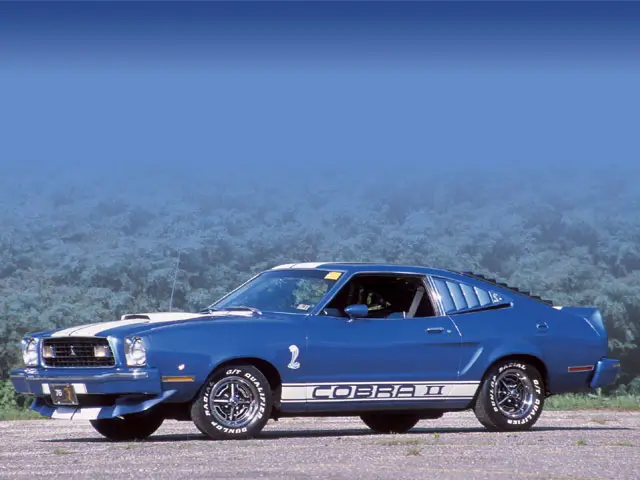
Let’s get one thing straight — the muscle car era wasn’t all thunder and glory.
Yeah, there were legends. 426 Hemis. LS6s. Boss 302s. But buried beneath the hood scoops and burnouts?
Disaster. After. Disaster.
We’re talking about engines that detonated dreams and turned “performance” into a punchline.
Overhyped blocks that ate gaskets for breakfast and coughed their guts out on Main Street.
And the kicker? We still worship them.
I’m not here to coddle your nostalgia. I’m here to blow it apart.
So grab your torque wrench. We’re about to rip open the myth, bolt by bolt.
26. 1982 Chevrolet Camaro “Iron Duke”
Evidence
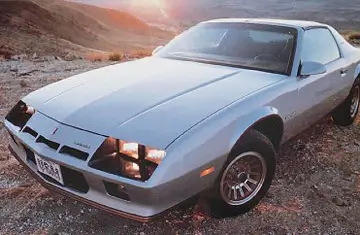
- Engine: 2.5L Iron Duke I4, 90 hp, 132 lb-ft torque.
- 0–60 mph: ~20 seconds. Quarter-mile: ~19.5 seconds.
- Weight: ~2,900 lbs.
Compared to the 1969 Camaro Z/28 with 290 hp, this was corporate malpractice. GM slapped Camaro badging on what was essentially a Chevette drivetrain. Even Time Magazine ranked it among the 50 Worst Cars of All Time.
MSRP (1982): $7,571 (≈ $23,400 today).
Collector Value Today: $2,500–$6,000.
Costs & Ownership Iron Dukes suffer from rod knock, carb issues, and laughable aftermarket support. Cheap to repair, but you’ll still end up slower than traffic.
Verdict The Camaro at its absolute lowest. If cars could have mugshots, this would be GM’s criminal record.
If Chevy could disgrace the Camaro, wait till you see how AMC assassinated its own legend.
25. 1976 Dodge Charger SE
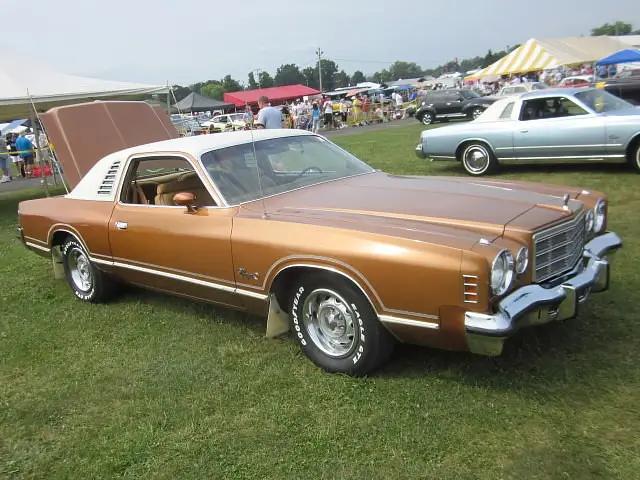
Evidence
- Engine: 360 V8, 145 hp.
- Weight: 4,100 lbs.
- 0–60 mph: ~13 sec.
A far cry from the muscle hero of the late ’60s, this “Charger” had opera windows, a vinyl roof, and luxury leanings. Pure bloat.
MSRP (1976): $5,684 (≈ $29,400 today).
Collector Value Today: $6,000–$10,000.
Costs & Ownership Rust magnets, saggy suspensions, thin aftermarket support.
Verdict The year Dodge neutered a muscle legend.
Think that’s bad? Pontiac’s Phoenix might be the biggest misfire in muscle car history.
24. 1977 Pontiac Phoenix
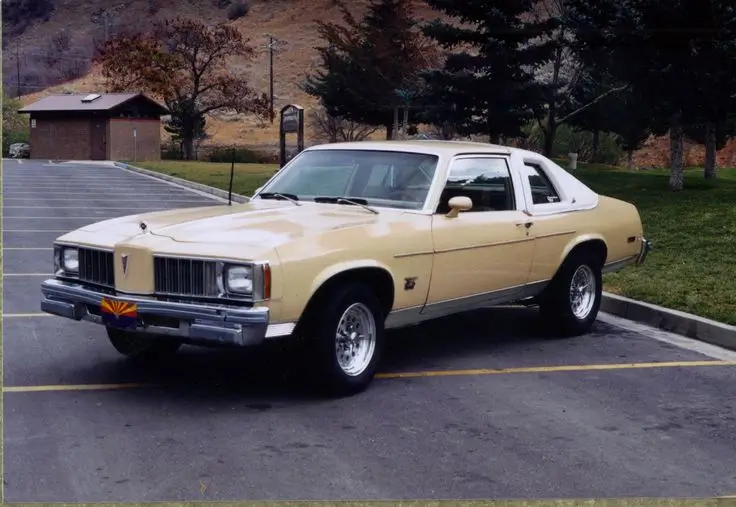
Evidence
- Engine: 301 V8, 135 hp.
- 0–60 mph: 12+ seconds.
GM positioned this as a Firebird alternative. Instead, it was a badge-engineered Chevy Nova that had none of Pontiac’s fire.
MSRP (1977): $4,500 (≈ $23,000 today).
Collector Value Today: $4,000–$7,000.
Costs & Ownership Notoriously bad carb tuning, weak transmissions, bland styling.
Verdict Another case of GM cannibalizing its own brands.
If Pontiac’s Phoenix burned out, Chevy’s Monza was DOA.
23. 1975 Chevrolet Monza
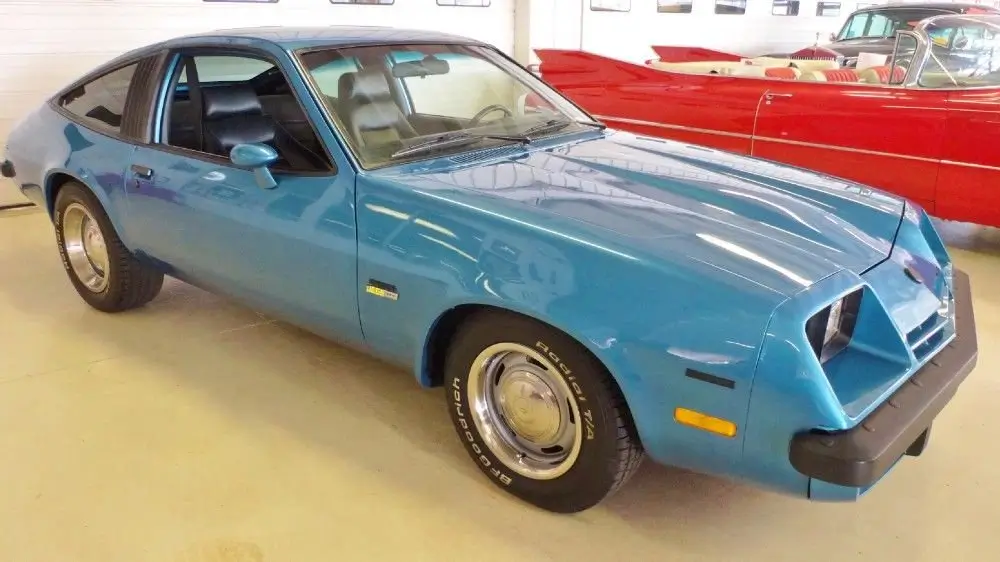
Evidence
- Engine: 262 V8, 110 hp.
- 0–60 mph: 13+ seconds.
Built as a Vega derivative with “performance” styling. Horsepower figures looked more Pinto than Camaro.
MSRP (1975): $3,800 (≈ $21,000 today).
Collector Value Today: $3,000–$5,500.
Costs & Ownership Rust-prone, awful fit/finish, nightmare engine bay.
Verdict Proof GM would slap a V8 in anything and call it muscle.
Monza was sad, but the Mustang II Cobra II was an even bigger fraud.
22. 1976 Ford Mustang II Cobra II
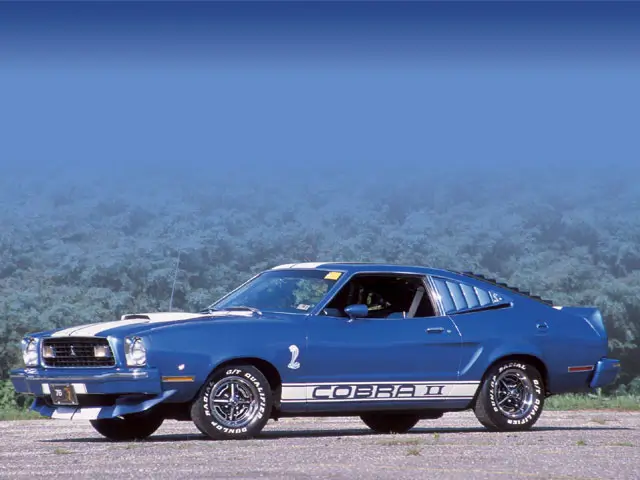
Evidence
- Engine: 302 V8, 134 hp.
- 0–60 mph: ~11 sec.
Ford turned the once-proud Mustang into Pinto-based cosplay. The Cobra stripes screamed “fast,” but the engine whispered “commuter.”
MSRP (1976): $4,006 (≈ $20,700 today).
Collector Value Today: $8,000–$14,000.
Costs & Ownership Parts are cheap, but nobody restores these—most end up in junkyards.
Verdict A disgrace to the Mustang badge.
But hey, at least it ran. Chrysler had a “muscle” car that couldn’t even start half the time.
21. 1980 Plymouth Volaré Road Runner
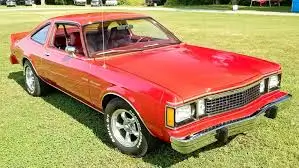
Evidence
- Engine: 318 V8, 120 hp.
- 0–60 mph: ~13 sec.
The Road Runner used to be king of bang-for-buck performance. By 1980, Chrysler had stripped it to stickers and mediocrity.
MSRP (1980): $5,412 (≈ $20,000 today).
Collector Value Today: $6,000–$12,000.
Costs & Ownership Volaré had legendary rust issues, torsion bar suspensions that collapsed, and endless electrical gremlins.
Verdict The year the bird forgot how to fly.
But Chrysler wasn’t done—they’d soon ruin the Challenger name too.
20. 1981 Dodge Challenger
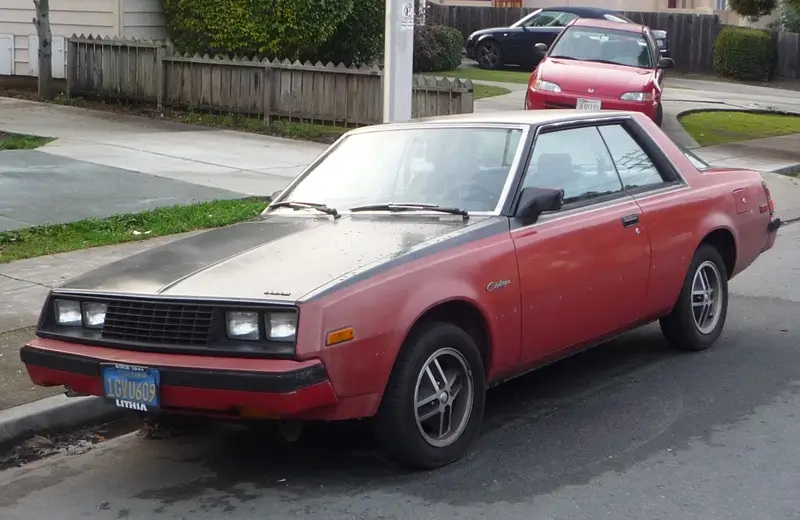
Evidence
- Engine: 2.6L Mitsubishi I4, 105 hp.
- 0–60 mph: ~13 sec.
Yes, Dodge outsourced its “muscle coupe” to Mitsubishi. Instead of HEMIs, it had wheezy fours.
MSRP (1981): $6,559 (≈ $22,000 today).
Collector Value Today: $3,000–$5,000.
Costs & Ownership Parts availability is poor, build quality weak, and aftermarket nonexistent.
Verdict Badge betrayal at its worst.
And yet, Chrysler had an even bigger embarrassment waiting with the Cordoba LS.
19. 1980 Chrysler Cordoba LS
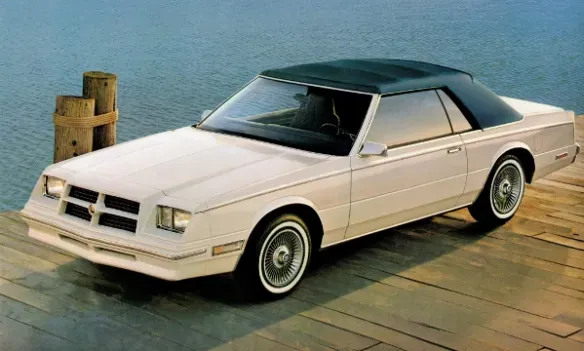
Evidence
- Engine: 318 or 360 V8, ~130 hp.
- 0–60 mph: ~14 sec.
Chrysler pitched it as “personal luxury muscle.” In reality, it was velvet seats and sluggish drivetrains.
MSRP (1980): $7,400 (≈ $27,000 today).
Collector Value Today: $4,000–$7,500.
Costs & Ownership Known for electrical fires, rust, saggy suspensions.
Verdict More lounge chair than muscle car.
If Chrysler’s luxury flop annoyed you, the next batch digs deeper into GM and Ford’s darkest disasters.
18. 1974 Pontiac GTO (Colonnade Disaster)
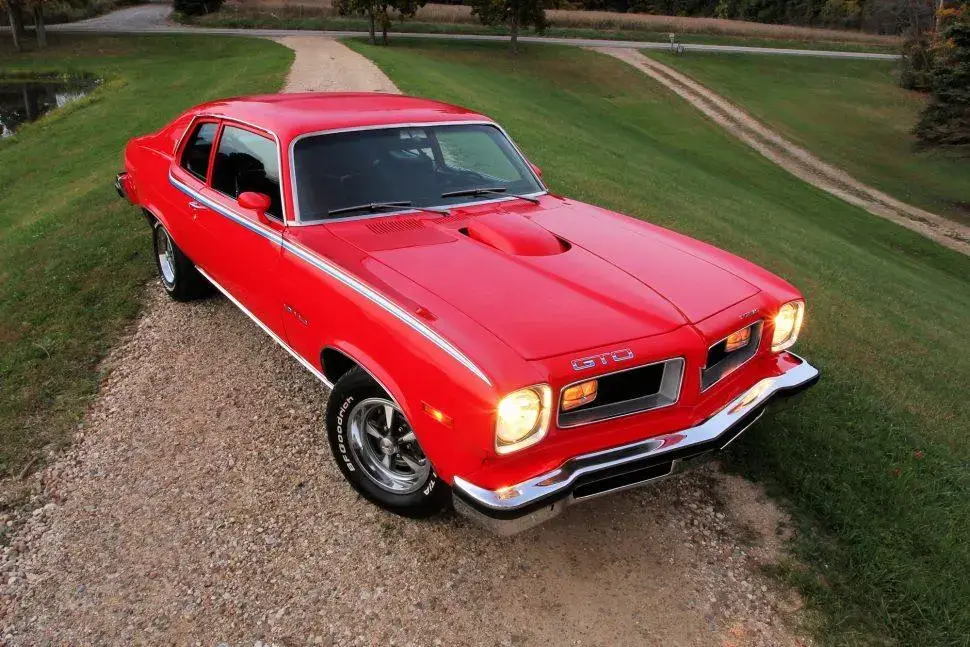
Evidence
Horsepower: 200 hp from the 350 V8.
Weight: ~3,800 lbs.
0–60: 9.4 seconds. Quarter mile: 17+ seconds.
Compare that to the 1966 GTO’s 389 Tri-Power—6.5 sec to 60, quarter in the low 14s. This wasn’t a step back—it was a full collapse.
MSRP (1974): $3,440 (≈ $22,200 today).
Collector Value Today: $12k–$18k for clean survivors, but nowhere near the six-figure prices of true ’60s GTOs.
Costs & Ownership: Colonnade-era GM parts are cheap but plentiful—mostly because nobody wants them. Paint faded fast, and rust took the rear fenders early.
Verdict Pontiac’s GTO once started the muscle car war. By ’74, it surrendered with a white flag disguised as a Colonnade roofline. This car wasn’t a GTO—it was an imposter trying to coast on old glory.
If Pontiac’s goat went lame, wait until you see the “Hemi” that couldn’t outrun a station wagon.
17. 1972 Plymouth Road Runner 400
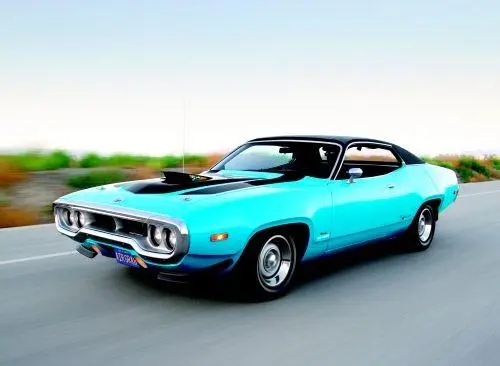
Evidence
Horsepower: 190 hp net (post-emissions drop).
Weight: ~3,900 lbs.
0–60: ~10 seconds.
The 440 Six-Pack and Hemi were still technically options, but almost nobody ordered them thanks to insurance rates and gas crisis. This made the once-ferocious Road Runner little more than a stickered-up B-body cruiser.
MSRP (1972): $3,028 (≈ $21,700 today).
Collector Value Today: $18k–$30k. Worth something for the name, but no one’s chasing these like the late-’60s examples.
Costs & Ownership: Emissions controls made them miserable to tune. Carburetors choked with lean-burn setups that killed power.
Verdict The Road Runner went from king of the stoplight to a featherweight joke. Muscle in name only—this bird forgot how to fly.
If Plymouth’s bird broke its wings, Dodge was about to ground its own legend.
16. 1975 Dodge Charger
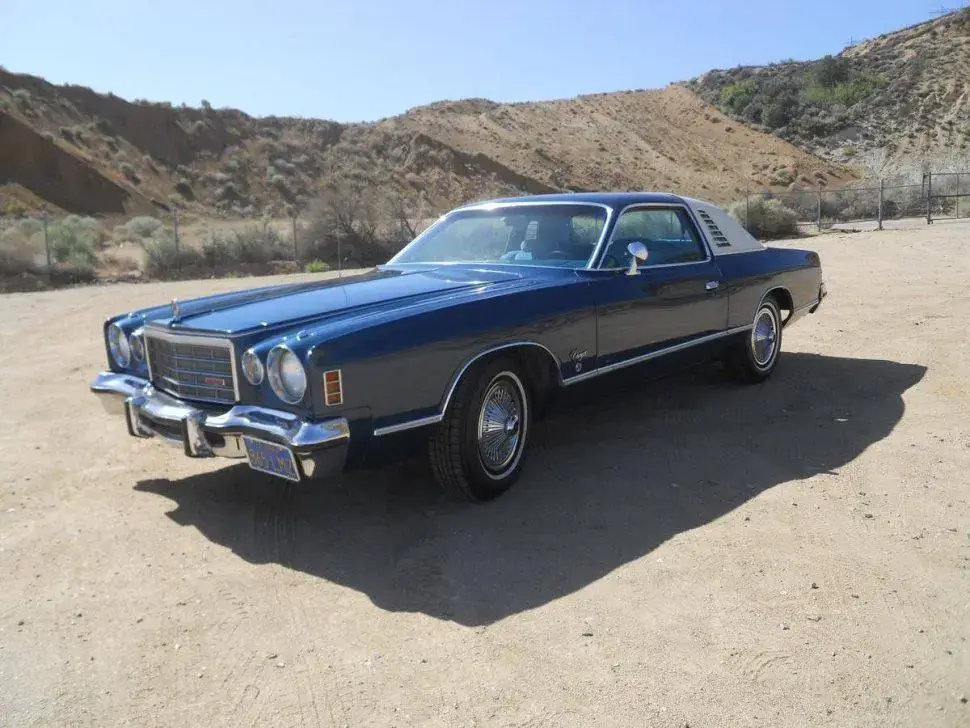
Evidence
Horsepower: 180 hp in most trims.
Weight: ~4,100 lbs.
0–60: ~11 seconds. This was less Charger, more Cordoba with badges. A land-yacht pretending to be a street fighter.
MSRP (1975): $4,300 (≈ $24,600 today).
Collector Value Today: $10k–$15k for survivors. Mostly nostalgia for the name.
Costs & Ownership: Built during Chrysler’s quality control freefall. Transmission seals leaked, interiors squeaked, and vinyl tops rotted before the warranty was up.
Verdict The Charger lost its muscle, its menace, and its identity. This wasn’t a continuation of the Bullitt-era icon—it was Chrysler selling you a lounge chair with doors.
But if Dodge built a bloated couch, Ford was about to try and pass off a Pinto as a Mustang.
15. 1974–1978 Ford Mustang II
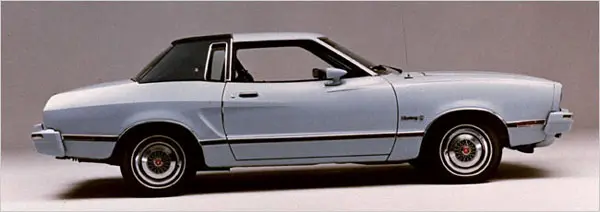
Evidence
Horsepower: 88 hp in base trims. Even the “Cobra II” topped out at 139 hp.
Weight: ~2,800–3,000 lbs.
0–60: 13–15 seconds depending on spec. For context, a 1969 Boss 429 could hit 60 in under 7 seconds.
MSRP (1974): $3,200 (≈ $20,800 today).
Collector Value Today: $6k–$12k. Even rare Cobra II versions don’t fetch much.
Costs & Ownership: Easy to maintain, but why bother? Pinto platform underpinnings mean it drives like a grocery-getter.
Verdict The Mustang II wasn’t just a stumble—it was Ford kneecapping its own legend. You can slap stripes and a snake on it, but at the end of the day, it’s still a Pinto with dreams.
If Ford ruined Mustang, wait until Chevy turned Corvette into a disco joke.
14. 1980–1982 Chevrolet Corvette California 305
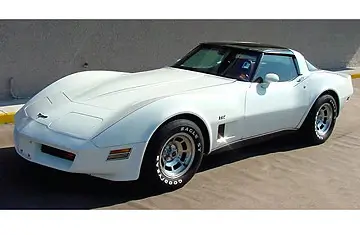
Evidence
Horsepower: 180 hp from a smog-choked 305 V8.
Weight: ~3,400 lbs.
0–60: 9 seconds. That’s slower than a Honda Accord of the same era.
MSRP (1980): $13,140 (≈ $49,500 today).
Collector Value Today: $12k–$18k. Among the least desirable Corvettes ever.
Costs & Ownership: Crossfire injection was a nightmare. Misfires, poor idle, constant vacuum leaks.
Verdict: This Corvette was proof that even icons can lose their way. A car that looked like a shark but bit like a goldfish.
And if you think that’s sad, GM once gave the Camaro a 4-cylinder.
13. 1979–1981 Ford Mustang 4.2 V8
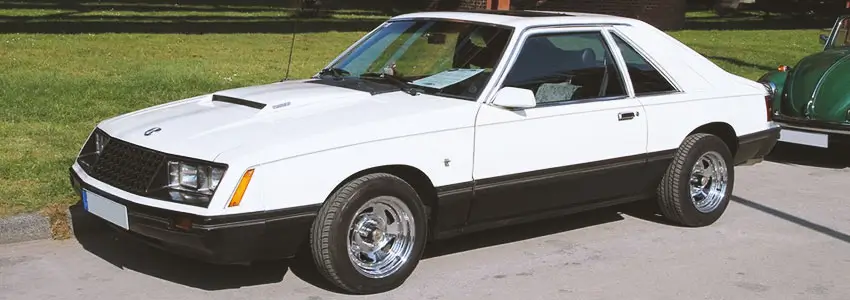
Evidence
Horsepower: 118 hp.
Torque: 194 lb-ft.
Weight: ~2,700 lbs.
0–60: 13 seconds.
Quarter mile: 19 seconds.
The weakest V8 Mustang ever sold.
MSRP (1979): $4,494 (≈ $19,700 today).
Collector Value Today: $7k–$12k.
Costs & Ownership: The 4.2 had chronic oil leaks, weak cams, and nothing redeemable.
Verdict This wasn’t a Mustang—it was a cruel joke. Ford put a V8 in name only. If cars could file lawsuits, this one would sue for identity theft.
And speaking of impostors, Dodge once slapped “Challenger” on a Mitsubishi.
12. 1978–1983 Dodge Challenger (Mitsubishi Edition)
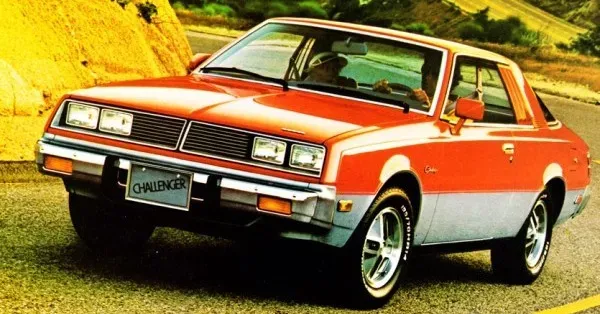
Evidence
Horsepower: 77–105 hp four-cylinders, optional 135 hp V6.
Weight: ~2,600 lbs.
0–60: 12–14 seconds.
No Hemi, no muscle, just badge fraud.
MSRP (1978): $5,100 (≈ $23,800 today).
Collector Value Today: $6k–$10k.
Costs & Ownership: Mitsubishi-built, which meant decent reliability but zero parts support for performance.
Verdict The Challenger name deserved thunder. Instead, it got drizzle. A disgrace wrapped in sheet metal.
But Chrysler didn’t stop there—they ruined Plymouth too.
11. 1982–1985 Camaro Berlinetta
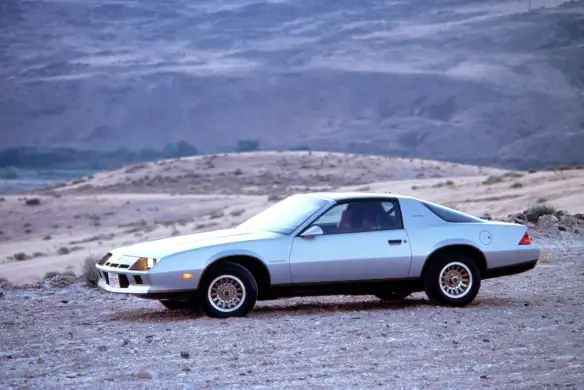
Evidence
Horsepower: 145–155 hp.
Weight: ~3,200 lbs.
Marketed as a “luxury Camaro,” which was code for slow Camaro.
MSRP (1982): $8,575 (≈ $26,500 today).
Collector Value Today: $6k–$9k.
Costs & Ownership: Plush velour interiors that fell apart, electronics that never worked.
Verdict The Berlinetta was proof that Chevy didn’t understand its own buyers. Nobody wanted a Camaro to be plush—they wanted it to be fast. This was neither.
Next batch, we hit the Top 10 Worst Muscle Cars Ever Built—where legends go to die.
10. 1971 AMC Matador “Machine”
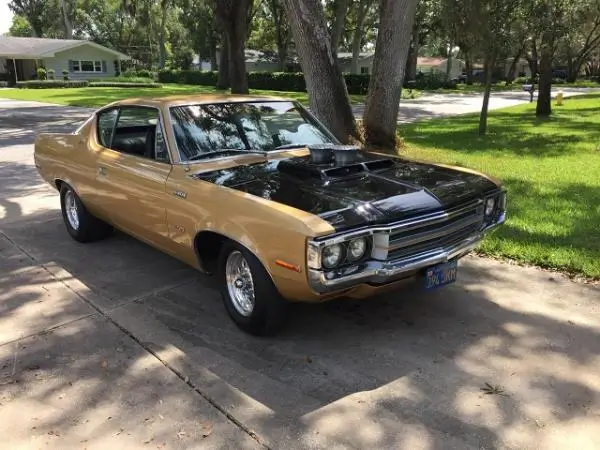
Evidence
Horsepower: 210–230 hp depending on spec.
Weight: ~3,900 lbs.
0–60: ~10 seconds.
AMC wanted to ride the muscle wave but drowned in mediocrity. Compared to a ’70 Chevelle SS 454 (450 hp, low 13s quarter mile), the Matador Machine was all hat, no cattle.
MSRP (1971): $3,400 (≈ $25,000 today).
Collector Value Today: $9k–$14k. AMC fans only.
Costs & Ownership: Parts scarcity, poor resale, and AMC’s legendary “paint that faded before the warranty ran out.”
Verdict AMC tried to build a muscle machine but instead built a rolling participation trophy. If muscle cars were prizefighters, this one would’ve been knocked out in the first round.
And if AMC stumbled, Chrysler managed to sabotage one of their brightest badges…
9. 1976–1980 Dodge Aspen R/T

Evidence
Horsepower: 160 hp in its most common trim.
Weight: ~3,700 lbs.
0–60: ~11 seconds.
A car meant to carry Mopar muscle into the malaise era, but instead it carried Mopar’s reputation into the gutter.
MSRP (1976): $4,400 (≈ $24,800 today).
Collector Value Today: $7k–$10k.
Costs & Ownership: Rust magnets. The NHSTA had a field day with recalls—brakes, axles, fuel leaks.
Verdict If muscle cars were supposed to intimidate, the Aspen inspired pity. Chrysler’s true low point.
If Dodge gave us rust on wheels, Mercury gave us a Cougar that should’ve been declawed.
8. 1974–1976 Mercury Cougar XR-7
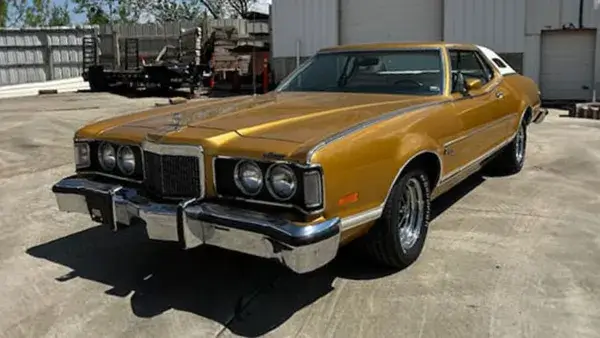
Evidence
Horsepower: 148 hp from a 351 Windsor V8.
Weight: ~4,200 lbs.
0–60: ~12 seconds.
Once positioned as a Mustang alternative, this was more like an underwhelming T-Bird clone.
MSRP (1974): $4,400 (≈ $25,600 today).
Collector Value Today: $8k–$12k.
Costs & Ownership: Known for electrical gremlins, rattly dashboards, and failing vinyl tops.
Verdict This Cougar wasn’t hunting—it was napping. Proof that Mercury should’ve stuck to badges instead of bloat.
And if Mercury played lazy, Chevy gave us a Monte Carlo SS with fake muscle.
7. 1977–1979 Chevrolet Monte Carlo SS
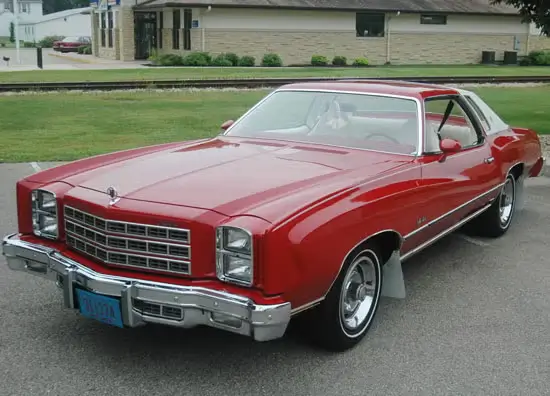
Evidence
Horsepower: 145 hp V8.
Weight: 4,000+ lbs.
0–60: ~12 seconds.
Advertised as sporty luxury, but what buyers got was Oldsmobile’s grandma car with SS letters glued on.
MSRP (1977): $5,300 (≈ $25,800 today).
Collector Value Today: $6k–$10k.
Costs & Ownership: Guzzled fuel with none of the fun. Heavy frames and sagging suspension killed handling.
Verdict The SS badge once meant something. Here, it meant “Slow Sedan.”
If Chevy cheapened the SS, Pontiac demolished the Trans Am’s reputation.
6. 1980–1981 Pontiac Trans Am Turbo 301
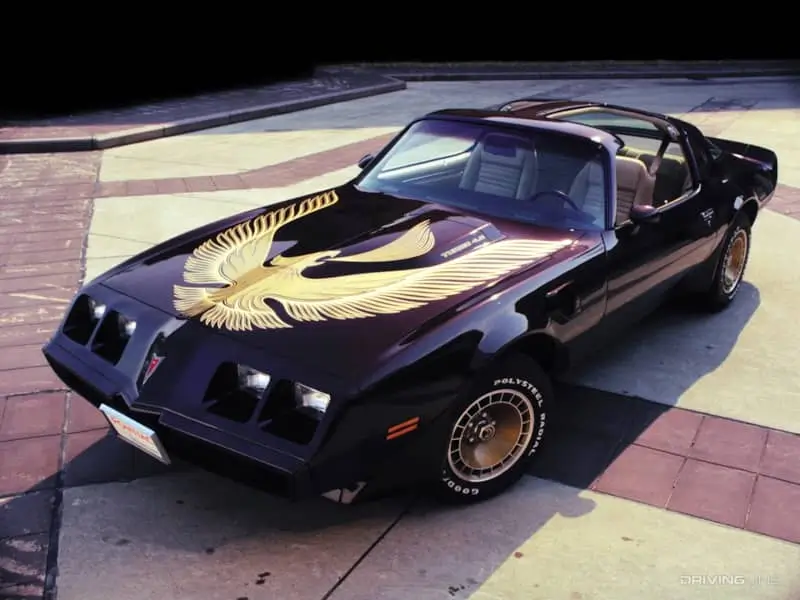
Evidence
Horsepower: 210 hp turbo V8 (on paper).
In practice? Turbo lag so bad you could floor it, wait three seconds, and then feel disappointment. 0–60: 9 seconds. The ’69 Trans Am hit that in half the time.
MSRP (1980): $7,000 (≈ $26,400 today).
Collector Value Today: $10k–$18k.
Costs & Ownership: Turbo seals blew constantly. Heat soak killed reliability. Nobody could tune them right.
Verdict The Trans Am had become a Hollywood star (thanks, Smokey and the Bandit), but in reality, it was all smoke and mirrors.
Pontiac fumbled. But Chrysler? They built a muscle car so bad it nearly killed the whole genre.
5. 1976 Plymouth Duster 360
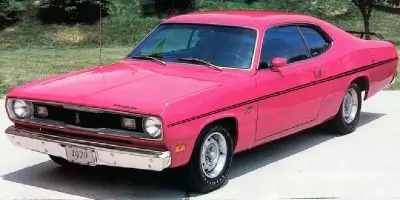
Evidence
Horsepower: 180 hp.
Weight: ~3,600 lbs.
0–60: ~11 seconds.
The Duster was once fun, cheap muscle. By ’76 it was wheezing.
MSRP (1976): $4,100 (≈ $23,100 today).
Collector Value Today: $7k–$12k.
Costs & Ownership: Known for rust, body flex, and fragile transmissions.
Verdict The Duster went from bargain muscle to bargain embarrassment. Mopar’s name took another hit.
But at least it wasn’t a Firebird Formula with less muscle than a hatchback.
4. 1977–1979 Pontiac Firebird Formula 301
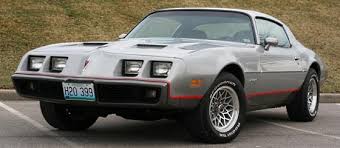
Evidence
Horsepower: 135 hp.
Torque: 240 lb-ft.
Weight: ~3,700 lbs.
0–60: ~12 seconds.
The Formula name once meant performance. Here, it meant “formula for failure.”
MSRP (1977): $4,800 (≈ $24,600 today).
Collector Value Today: $6k–$10k.
Costs & Ownership: Low output, weak blocks, poor resale.
Verdict A Firebird that couldn’t fly. Proof Pontiac was selling decals instead of performance.
But the next car? It’s the Mustang that cursed a generation.
3. 1974 Ford Mustang II Ghia
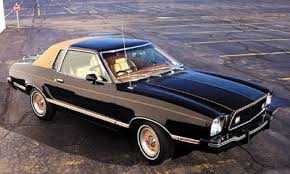
Evidence
Horsepower: 88 hp inline-4, optional 105 hp V6.
Weight: ~2,800 lbs.
0–60: ~15–17 seconds.
The Mustang II tried to be a luxury compact, but came off as a neutered Pinto.
MSRP (1974): $3,200 (≈ $20,800 today).
Collector Value Today: $5k–$9k.
Costs & Ownership: Cheap parts, but worthless as performance.
Verdict The Mustang II Ghia was proof Ford lost the plot. Muscle was dead, and Ford was dancing on the grave.
But if Ford lost the plot, Chevy dropped the script entirely…
2. 1979 Oldsmobile 442 (Hurst/Olds)
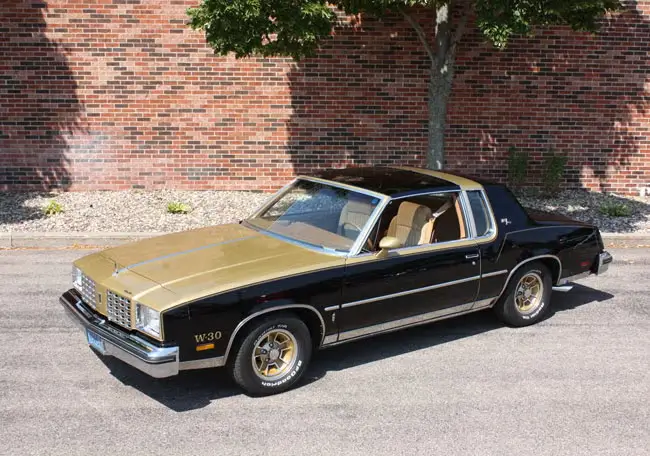
Evidence
Horsepower: 160 hp from a 350 V8.
Weight: ~3,800 lbs.
0–60: ~11 seconds.
The legendary 442 (4-barrel, 4-speed, dual exhaust) became meaningless numbers.
MSRP (1979): $5,800 (≈ $24,800 today).
Collector Value Today: $8k–$12k.
Costs & Ownership: Weak smog motors, nothing special.
Verdict The 442 once scared competitors. By 1979, it scared only its owners when merging onto highways.
And here we are. The #1 worst muscle car ever built. Drumroll.
1. 1979 AMC Spirit AMX
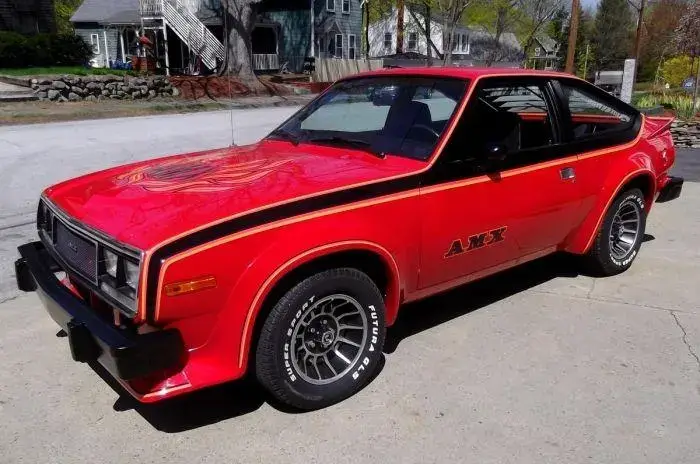
Evidence
Horsepower: 110–120 hp inline-6. Optional 304 V8 made 125 hp.
Weight: ~3,000 lbs.
0–60: ~13 seconds.
This was supposed to be AMC’s revival of the AMX badge. Instead, it was their funeral song.
MSRP (1979): $5,400 (≈ $23,000 today).
Collector Value Today: $5k–$9k. AMC diehards only.
Costs & Ownership: Poor build, cheap interiors, laughable performance.
Verdict The AMC Spirit AMX wasn’t just bad—it was the death rattle of an entire company. The worst muscle car ever made because it didn’t just fail—it helped kill muscle cars for years.
Closing Thoughts
From Pontiac’s Colonnade goat to AMC’s Spirit AMX coffin, this list proves one thing: when muscle cars went bad, they went really bad. High insurance, emissions controls, oil crises, and clueless executives all conspired to neuter legends. The result? A graveyard of badges that once meant fear but ended up inspiring laughter.

